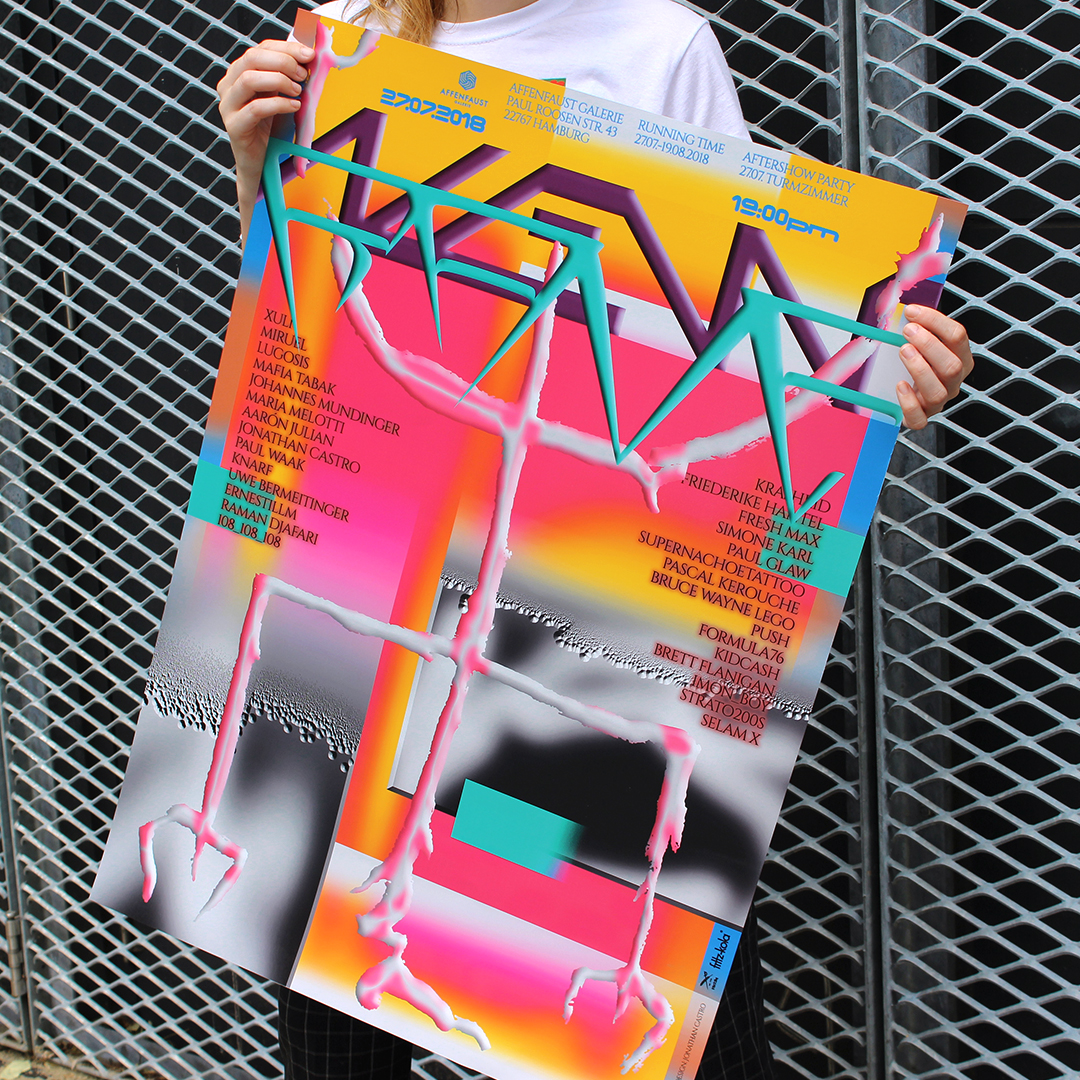Two designers that in part inspired the conception of this project are Graphic designer Johnathon Castro and fashion/product designer Dom Sebastian. The designers both conform to a similar style of vaguely anti-graphic visual communication that pushes the boundaries of form and mainstream acceptable style.
Jonathan Castro is originally from Lima, Peru but currently resides in Amsterdam where he’s done stints at The Rodina and is now working as a graphic designer at Studio Dumbar in Rotterdam.
Fanzines, the alternative music culture of the late 90s and the visual saturation Jonathan experienced in Lima all led to him pursuing a career in design. “I was really young, dazed and confused but very curious. I had this strong connection with the aesthetics of the albums, shirts, posters and merchandising from the bands I liked but also bands I disliked,” says Jonathan. “At the same time, I was growing unconsciously influenced by the colours and kitsch aesthetics of my culture.”
While Jonathan doesn’t believe he has a tangible style, he hopes to convey a language through his work. “I am really interested to take visual ideas and aesthetics from one context and put them in another and through process see how this new aesthetic lives in a new hybrid context.” His portfolio is full of varied projects including publications, exhibition identities, branding and printed collateral. “Projects related to research, experimental music and arts or where fields overlap is always fun and inspiring,” says Jonathan. Throughout his work, there’s a strong sense of colour and vibrancy, with clashing hues and abstract patterns surrounding a mix of sans serif and ornate typefaces. Process plays an important part in Jonathan’s work as it’s where all the research and exploration come together. “It’s the environment where you are completely at the liberty of being who you want to be and how far you want to go,” he explains. Jonathan sees design as an “accumulation of energy in an object” and the act of “transferring it”. “I want my ideas and visuals to find their support in whoever sees or experiences them,” he says. itsnicethat.com


Dom Sebastian works in a similar way with regards to colour, form and a passion for the unusual. However, Dom's work is anything but print and screen. He has an impressive portfolio for a student, comprised mainly of silicones and material innovation. Having recently released his debut collection he is a perfect reference for an contemporarily cutting edge fashion project. The worlds he creates are weird, wacky and wonderful, and we want in. He uses silicones, thermoplastics and polyurethane systems to make futuristic designs that transport us into an alternative universe. Dom sits somewhere between a mad scientist, fashion designer and artist. His work transverses a variety of practices, bringing them together in ways that are unique and spellbinding. He initially studied graphic design at Central Saint Martins before transferring to textile design. “I think the way that my work moves between the different areas can confuse people because they can’t define it”, he explains. “My recent project Gel Futures is not just a fashion collection, it’s more than that. I have brought together everything I have ever learnt”.
Just scrolling through Gel Futures is a pretty surreal experience; zoomed in, pixelated pictures of sticky, slimy plastic are paired with gloopy videos and strange shots of the clothing. Dom’s work is intensely tactile. When you look at it, you can imagine the feel, tight and stretchy, on your skin. “The way silicone feels on the body is sensual”, he tells us. “It forms itself to you”.
Dom creates second skins, more evocative of superhero costumes than our own dull flesh. The artist is fascinated by modifying and enhancing the body. Although technology has advanced, it seems the human form has not yet caught up. Dom’s work gives us a glimpse into our future, and how we could potentially look if we embraced experimentation.
“The creation of textiles and fabrics happens through chemical reactions”, he tells us. “I had the viewpoint of creating print within the material, opposed to the print being a layer on top of a surface”. Symbols are included throughout his work, swirls and suns blend with the plastics, suggestive of mythology and the supernatural.
“The collection is like a journey”, Dom says. “There are five main atmospheres. There’s a different mood for each set and the symbols link into that”. The colour combinations he uses evoke different feelings. Black and red swirl together like a fiery hell, clouds float next to a blazing, passionate sun. There are earthy greens and clear plastics that drip like water.
The artist is drawn to how adaptable his materials are, the way you can alter their characteristics. “When you start with raw chemicals you can transform them into anything imaginable”, he explains. Versatility is exactly what his practice encompasses. Dom longs for the human body to be able to transform, just as his materials do and as his practice does; it is a world of endless possibilities, bright colours and satisfying, oozing slime. itsnicethat.comAlthough Dom doesn't use type to any great extent within his work the aesthtic and general vibe is very inspiring for this project.








No comments:
Post a Comment